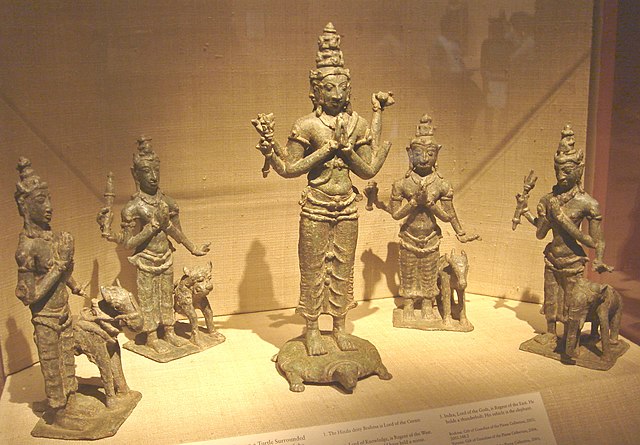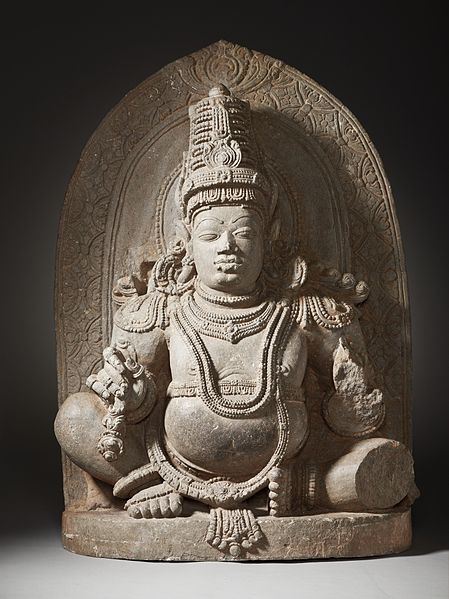Guardians of the directions
The Guardians of the Directions are the deities who rule the specific directions of space according to Hinduism, Jainism and Vajrayāna Buddhism—especially Kālacakra. As a group of eight deities, they are called Aṣṭa-Dikpāla (अष्ट-दिक्पाल), literally meaning guardians of eight directions. They are often augmented with two extra deities for the ten directions, when they are known as the Daśa-Dikpāla. In Hinduism it is traditional to represent their images on the walls and ceilings of Hindu temples. They are also often portrayed in Jain temples, with the exception that Nāga usually takes the place of Vishnu in the nadir. Ancient Java and Bali Hinduism recognize Nava-Dikpāla, literally meaning guardians of nine directions, that consist of eight directions with one addition in the center. The nine guardian gods of directions is called Dewata Nawa Sanga. The diagram of these guardian gods of directions is featured in Surya Majapahit, the emblem of Majapahit empire.

Parshvanatha Temple, Khajuraho, the southeast corner, with guardians Indra (E) and Agni (SE).
Brahma, Lord of the Zenith (center) with (from left) Varuna, Kubera, Yama and Indra.
The Ashta-Dikpala with Brahma in the centre denoting Zenith
Kubera also known as Kuvera, Kuber and Kuberan, is the god of wealth, and the god-king of the semi-divine yakshas in Hinduism. He is regarded as the regent of the north (Dikpala), and a protector of the world (Lokapala). His many epithets extol him as the overlord of numerous semi-divine species, and the owner of the treasures of the world. Kubera is often depicted with a plump body, adorned with jewels, and carrying a money-pot and a club.
A 10th century statue of Kubera at San Antonio Museum of Art
A bronze Matrika goddess group along with Ganesha (left) and Kubera (right) currently at the British Museum. Originally from Eastern India, it was dedicated in 43rd year of reign of Mahipala I (c. 1043 AD).
Kubera, 1st century CE, Mathura Museum.
An 11th century Kubera, Karnataka.







